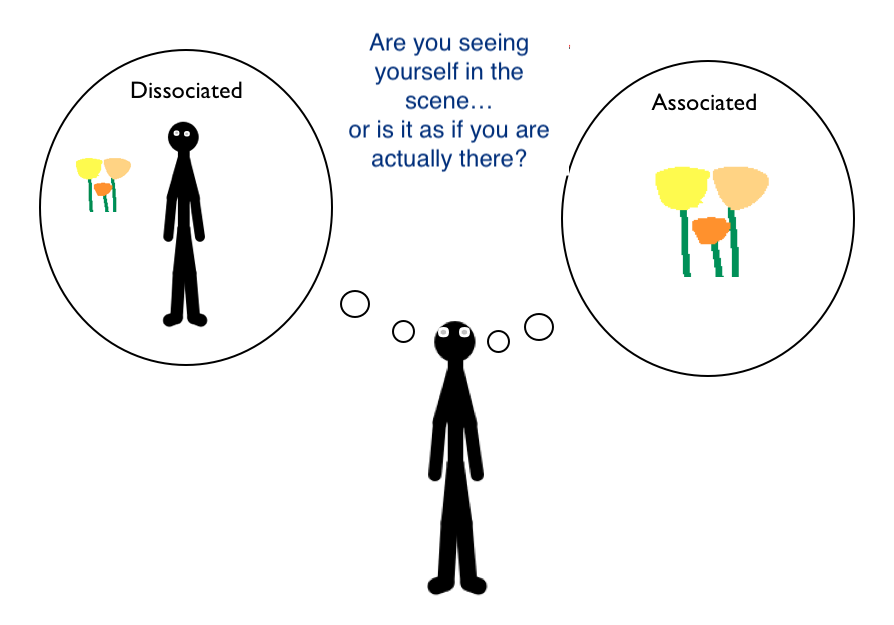
Associated
Associated in NLP terms is when you are really present to a feeling or relationship you have with the memory of an experience. You will be “inside” the experience with all the sensory awareness that go with it, therefore in touch to that memory or event.
When your client is associated, you can perform NLP anchoring techniques as they are really feeling the emotion of the event. Any time your client has an associated event, you can skillfully use that in your practice.
Disassociated
When we disassociate with something, we are more detached. We have the ability to observe. It’s like watching ourselves on t.v. or from afar. We only see and hear what is going on. We experience feelings about the situation, but not like the characters we are observing who are feeling the powerful sensations.
Be mindful that disassociation has nothing to do with the mental health diagnosis of “dissociative disorder”. Dissociative disorder is characterized by: The splitting off from consciousness, as in amnesia or mental blocking.
Disassociation in this topic means to observe a situation to gain a different perspective and decrease the intensity of negative feelings associated with it, both mentally and physically.
Association
Association is when we relive an experience. We are in it and see everything around us from that perspective. We feel the feelings in what seems like real time. We have other sensory experiences. What we see, hear, smell, even taste, as if it were happening right now. Association is when we are being the active participant.
When we are thinking of something pleasant, we will view it more positively when we are associated in it. It will create positive thoughts which will make us feel happier. When we feel happier, we physically become healthier. Our heart beat settles and our blood pressure calms. If we take a moment to slow down and experience other sensations, (sounds, smells, sights…) it will enhance the feeling even deeper. This can be a powerful tool when trying to get motivated.
Dissociation
Dissociating from unpleasant memories or experiences decreases the emotional pain, depression, and anxiety that often accompany them. When we become an observer (vs. participant) we can see things from an objective viewpoint, and release emotion attached to an event. In my experience, this release has a positive impact both emotionally and physically as well. I have combined this with other techniques to decrease the intensity such as “dimming the lights” and “lowering the volume” (heck, hit the mute button) and “making the screen smaller and fade out”. These tools are powerful because they decrease or eliminate the sensory connections, which is what the unconscious is more likely to hold on to.
It’s never wise to get stuck in one mode or the other. Pain is not comfortable, but it can be part of an important learning and growth experience. When a person gets stuck in disassociated mode, they analyze everything rationally but will not experience a range of emotion and are not always better off. They should learn how to associate into their feelings, at least some of the time.
When is it useful to have a memory associated?
- To make a resourceful state or an event appear as real. In order to be immersed in one’s own experience. Feel emotions.
- Could be used to test emotions or otherwise on a future event.
- To bring back to life empowering events and emotions from the past.
And dissociated?
- To look on some event in an objective way to take learnings from it.
- To reduce overwhelming emotions to gain a more resourceful state.
- Memory that is dissociated is a direction. Memories put back into the future are dissociated for this reason.
When done please take the time to reflect on the lesson and post a comment or question below. What was your reaction to the videos? What insights did you gain? What questions arose for you?
Also, consider responding to the comments of others to start a dialogue.
After you have posted your comment hit the Mark Complete Button and move on to the next topic.
Responses
You must be logged in to post a comment.

Detailing the distinctions with Associated and Dissociated aligned with benefits of each and when to use to benefit the client was very useful.